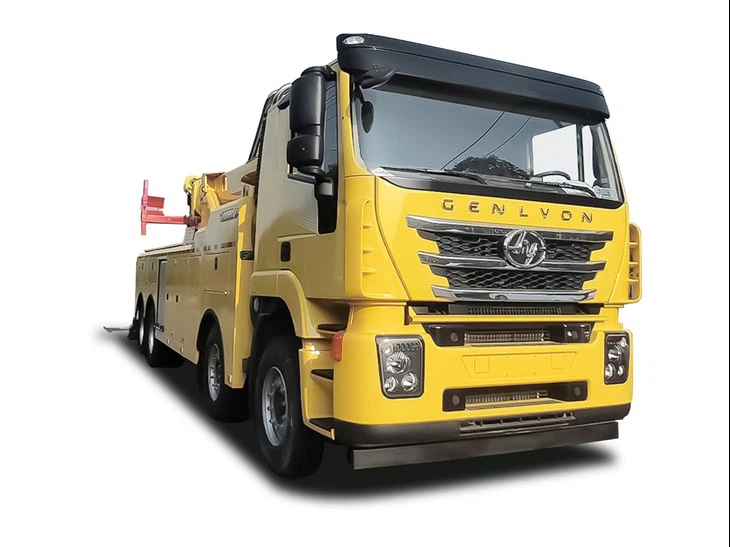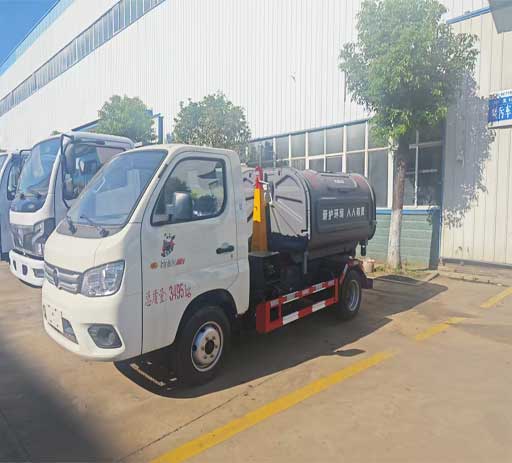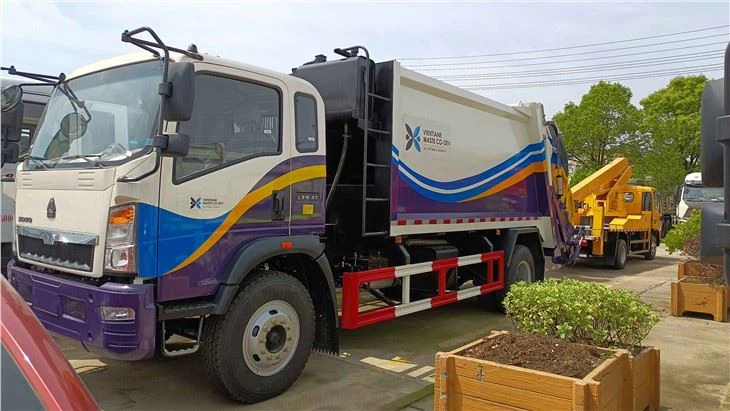Fuel Bowsers: A Comprehensive Guide to Understanding and Utilizing Fuel Dispensing Solutions

Introduction
Fuel bowsers play a crucial role in various industries by facilitating the safe and efficient storage and dispensing of fuel. Whether it’s for agriculture, construction, transportation, or emergency services, having a reliable fuel bowser can make all the difference in operations. In this article, we will explore what fuel bowsers are, their types, components, various applications, and critical factors to consider when selecting the right one for your needs. We will also address common questions and concerns to ensure you have all the information you need.
What Are Fuel Bowsers?
Fuel bowsers are specialized vehicles or portable containers equipped with tanks and pumps for storing and dispensing fuel. They are often used in settings where fixed storage tanks are impractical or where mobility is essential. With various sizes and configurations, fuel bowsers can cater to different fuel types, including diesel, gasoline, kerosene, and other oil-based fuels.
Types of Fuel Bowsers
Understanding the types of fuel bowsers available will help you choose the right one for your application. Below are the key types:
1. Mobile Fuel Bowsers
Mobile fuel bowsers are designed for transport, allowing operators to deliver fuel to various locations. These units are often mounted on trailers or trucks, making them ideal for remote sites or during emergencies.
2. Static Fuel Bowsers

Static fuel bowsers are usually stationary units installed at specific locations, such as construction sites, farms, or gas stations. They provide a reliable source of fuel onsite.
3. Skid-Mounted Fuel Bowsers
Skid-mounted bowsers are designed to be mounted on a frame or skid for easy transport. They can be loaded onto a trailer or truck for mobility and are suitable for areas with space constraints.
Components of Fuel Bowsers
Fuel bowsers consist of several critical components, each serving a specific function. Understanding these components will enhance your knowledge of how fuel bowsers operate.
1. Fuel Tank
The fuel tank is the primary component that stores the fuel. Tanks come in various sizes and materials, such as steel or polyethylene, to suit different types of fuels and storage requirements.
2. Pump
The pump is essential for dispensing fuel from the tank. Pumps can be manual or electric and vary based on flow rates and pressure requirements.
3. Dispensing Nozzle
The dispensing nozzle allows for the controlled release of fuel. Nozzles should be compatible with the type of fuel being dispensed to prevent contamination.
4. Metering System
A metering system measures the amount of fuel dispensed, ensuring accurate transactions and tracking usage.
5. Hoses and Fittings
Hoses transport fuel from the tank to the nozzle, while fittings ensure secure connections. It’s essential to choose hoses that are rated for the type of fuel being used.
6. Safety Equipment
Safety equipment such as emergency shutoff valves, spill containment systems, and fire extinguishers are vital to ensure safe fuel management.
Applications of Fuel Bowsers
Fuel bowsers have a diverse range of applications across multiple industries. Some of the most common uses include:
Agriculture
In agriculture, fuel bowsers are commonly used to refuel machinery like tractors and harvesters onsite, minimizing downtime. For example, a farmer can use a mobile bowser to refuel equipment in remote fields, ensuring productivity during peak seasons.
Construction
Construction sites often require large amounts of fuel for heavy machinery. Static fuel bowsers can be installed on-site to provide easy access to diesel for cranes, excavators, and other equipment.
Transportation
Fuel bowsers are ideal for transport companies that need to refuel vehicles on the go. Mobile bowsers allow fleet managers to reduce travel costs and ensure their vehicles are always fueled.
Mining and Oil Extraction
In mining and oil extraction, fuel bowsers facilitate the operation of heavy-duty equipment in remote locations, where conventional fuel stations are not available. The mobility of these bowsers allows for flexibility when working in challenging areas.
Emergency Services
During emergencies, having quick access to fuel can be life-saving. Emergency services can deploy fuel bowsers to disaster sites for powering generators, rescue vehicles, and other critical equipment.
Choosing the Right Fuel Bowser
Selecting the appropriate fuel bowser involves considering several factors to ensure that you choose the best unit for your needs.
1. Fuel Type
Identify the type of fuel you will be dispensing, whether diesel, gasoline, or other fuels. Ensure that the bowser is compatible with the fuel to prevent corrosion and contamination.
2. Capacity
Determine how much fuel you will need to store and dispense. Fuel bowsers come in various capacities, from small 100-liter units to large 10,000-liter tanks.
3. Mobility Requirements
Assess whether you need a mobile or static unit. Mobile bowsers are suitable for remote work locations, while static bowsers may serve well in fixed installations.
4. Material and Construction
Choose a fuel bowser made from durable materials that can endure environmental conditions and the type of fuel being stored. Steel and high-density polyethylene are common for fuel tanks.
5. Safety Features
Prioritize safety features such as spill containment measures, automatic shut-off valves, and fire safety equipment to reduce the risk of accidents.
6. Regulatory Compliance
Ensure that the fuel bowser complies with local regulations and standards for fuel storage and handling. Check for necessary certifications and approvals.
Maintenance and Care of Fuel Bowsers
Proper maintenance of fuel bowsers is essential for longevity and safe operation. Below are essential maintenance tips.
1. Regular Inspections
Conduct regular inspections of the bowser, including check-ups of the tank, hoses, nozzles, and safety equipment. Look for signs of wear or damage.
2. Cleaning
Keep the tank and all components clean to prevent fuel contamination. Periodically flush the tank and hoses to remove sediments and buildup.
3. Repair and Replacement
Promptly repair any leaks or malfunctions. Replace worn-out components to ensure the bowser operates safely and effectively.
4. Fuel Quality Management
Regularly test the fuel quality using appropriate methods to ensure it meets standards for viscosity and cleanliness.
5. Documentation
Maintain records of inspections, maintenance, and any repairs carried out on the fuel bowser to comply with regulations and for future reference.
Fuel Bowser Cost Considerations
When budgeting for a fuel bowser, it’s important to consider both the purchase price and ongoing costs.
1. Initial Purchase Price
The cost of a fuel bowser varies based on factors such as size, type, and features. Basic mobile units can start from as low as $1,000, while larger, more specialized bowsers can exceed $30,000.
2. Operating Costs
Consider the costs associated with fuel, maintenance, repairs, and insurance over time. Fuel bowsers require regular maintenance that can incur additional expenses.
3. Regulatory Compliance Costs
You may encounter costs associated with ensuring compliance with local and national regulations, such as permits or inspections.
Environmental Considerations
Using fuel bowsers carries environmental responsibilities. Here are significant considerations:
1. Spill Prevention
Implement spill prevention measures, including secondary containment systems and regular inspections, to minimize environmental impact.
2. Proper Disposal of Fuel Waste

Ensure that any waste fuel or byproducts are disposed of in accordance with local regulations to prevent soil and water contamination.
3. Fuel Efficiency Practices
Train employees on efficient fuel use practices to reduce waste and enhance operational efficiency.
FAQs about Fuel Bowsers
1. What types of fuels can be stored in fuel bowsers?
Fuel bowsers can typically store diesel, gasoline, kerosene, and other oil-based fuels depending on the construction and design.

2. How often should fuel bowsers be maintained?
Fuel bowsers should be inspected and maintained at least every six months to ensure they remain safe and compliant with regulations.
3. Are there regulatory requirements for using a fuel bowser?
Yes, there are various local and national regulations concerning the storage and dispensing of fuel, which must be adhered to for safety and compliance.
4. Can fuel bowsers be used for emergency fuel supply?
Absolutely! Fuel bowsers are often used in emergencies to provide quick access to fuel for generators, vehicles, and other essential equipment.
5. What safety features should I look for in a fuel bowser?
Look for features such as spill containment systems, automatic shut-off valves, secure locking systems, and adequate fire safety equipment.
6. How do I choose the right fuel bowser for my needs?
Consider factors like fuel type, capacity, mobility needs, construction material, safety features, and regulatory compliance when selecting a fuel bowser.
